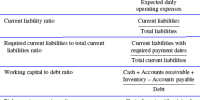Just in time inventory, also known as JIT inventory, is the reduced amount of inventory owned by a business after it installs a just-in-time manufacturing system. It is a management strategy that aligns raw-material orders from suppliers directly with production schedules. This type of system is called a “pull” system. The intent of a JIT system is to ensure that the components and sub-assemblies used to create finished goods are delivered to the production area exactly on time. It is a positive cost-cutting inventory management strategy, although it can also lead to stockouts. The goal of JIT is to improve a company’s return on investment by reducing non-essential costs.
Doing so eliminates a considerable amount of investment in inventory, thereby reducing the working capital needs of a business. The procedure involves ordering and receiving inventory for production and customer sales only as it is needed to produce goods, and not before.
JIT was developed in Japan in the 1960s and ’70s by Taiichi Ohno at Toyota Motor Company, so it also is known as the Toyota Production System. In the 1980s, it made its way to American companies, starting at Hewlett-Packard.
JIT inventory management is used today by businesses in industries ranging from retail to fast food to tech. Toyota is one of the most famous examples of Just in Time manufacturing simply because it was one of the first to implement this strategy effectively.
Information Source:
















